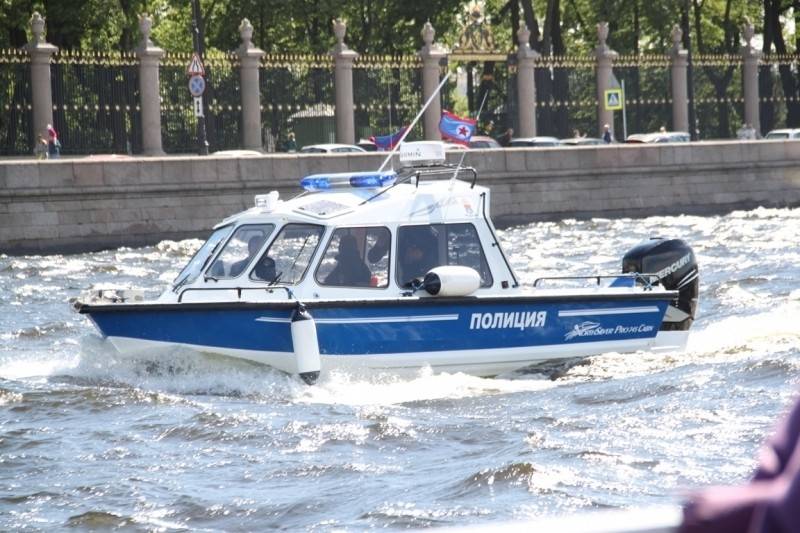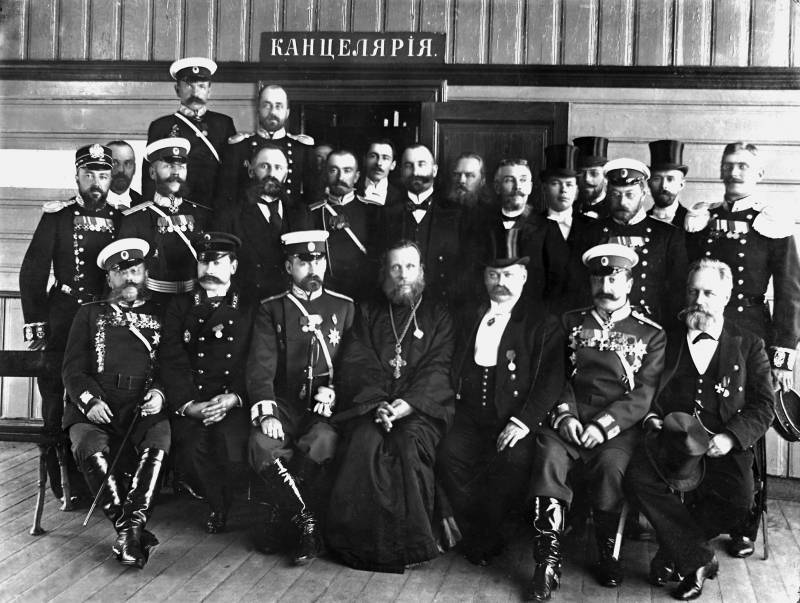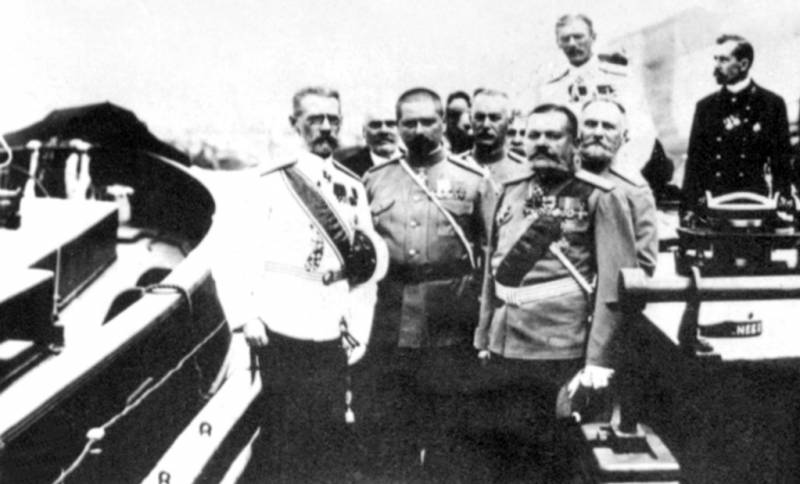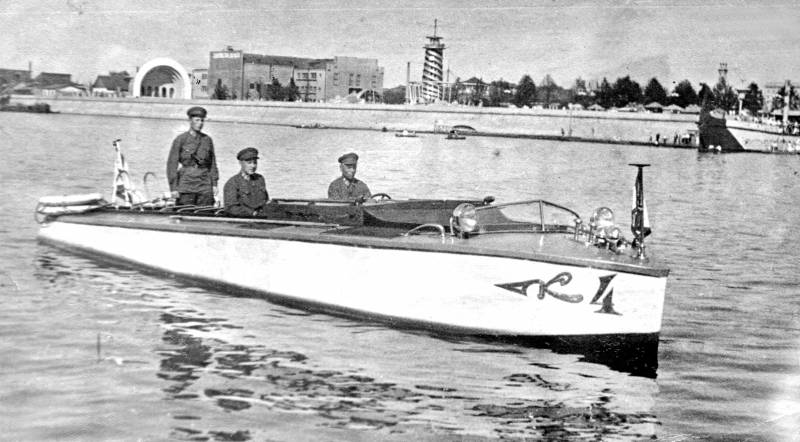For order on the water. Day of the river police of Russia

At the beginning of the XIX century. Russian authorities have come to grips with the issue of streamlining the management of water communications. In 1809, by the decision of Emperor Alexander I, the Directorate of Water and Land Communications was established. The Russian empire was divided into 10 districts under the direction of water and land communications directors, who were in possession of police teams. It was a prototype created much later than the river police.
In the second half of the 19th century, the improvement of the law enforcement system continued in the Russian empire, primarily the police services. The spread of revolutionary ideas in society, the emergence of populist organizations, the increase in crime — all these circumstances greatly disturbed the Russian authorities and helped strengthen the Russian police.
27 June 1867 was created a special river police. Initially, it existed only in St. Petersburg - for the protection of public order in the Russian capital, but soon it also appeared in Riga, Odessa and Nikolaev. The need to increase security measures on the rivers and canals of St. Petersburg was conceived by the authorities for a long time, and here in 1866 a special commission was assembled under the leadership of General Prince Alexander Arkadyevich Suvorov, who in 1861-1866. He served as the St. Petersburg military governor-general and was well acquainted with the peculiarities of the organization of law enforcement in the Russian capital. After D. Karakozov's attempt on Emperor Alexander II in 1866, the post of military governor-general of St. Petersburg was abolished, and Suvorov became general inspector of infantry, but this did not prevent him from leading the commission to create the river police.
River police were assigned administrative and police tasks. She had to be responsible for enforcing legislation in the field of navigation, maintaining order on the water and in the coastal zone, supervising the load of goods and their rolling ashore, checking steam and rowing vessels designed for flooding in good condition, fighting theft and vagrancy on water. arteries of St. Petersburg, determine the rules for closing the navigation and ensure the safety of the passage on the ice. In addition, rescue functions were assigned to the river police in respect of sinking people and crashing ships.
The staff of the river police in St. Petersburg was not very large. The river police was subordinate to the chief police officer of St. Petersburg, and the manager directly supervised its activities. He was subordinated to 3 officers - assistants, lower ranks and a crew of sailors, seconded by the Naval Ministry. The chief of the river police was the head officer fleet, and his assistants - chief officers of the fleet. The appointment of the manager and his assistants was also carried out by mutual agreement of the Maritime Ministry and Chief Police Officer of St. Petersburg. The first manager of the St. Petersburg River Police was appointed Fleet Captain Vladimir Ivanovich Korostovets.
The experiment to create a river police in St. Petersburg was successful, so the government decided to create a river police on other water arteries of the Russian Empire. So, in May 1882, it was decided to create the Nizhny Novgorod River Police, which was to be responsible for the order on the Oka and Volga rivers. The Nizhny Novgorod Governor himself headed the River Police Committee; the committee included the Vice-Governor, the police chief, the head of the river police, the head of the railway department, the shipping inspector, the city head, the architect, the manager of the fairs. The direct management of the river police was carried out by the chief of the river police with assistants and subordinate lower ranks. The personnel of the river police of Nizhny Novgorod was in the service of the Ministry of Internal Affairs of the Russian Empire, although the salary rates in Nizhny Novgorod, as in other provincial cities, were slightly lower than in St. Petersburg, but this is understandable - and life in the capital was more expensive , and the responsibility of the metropolitan river police more.
In 1885, the number of St. Petersburg River Police was increased. It introduced the post of junior assistant manager of the river police, two senior policemen and ten junior police officers. In the 1894 year, in addition to the river police, another structure was created that was responsible for the protection of order and safety on the waters and the coast - the port police. Port guards, port foremen and port policemen served in the major military ports of the Russian Empire, providing security and fighting crime.
At the beginning of the twentieth century. In the St. Petersburg River Police, there was already an 104 officer. The following posts were introduced: River Police Manager, four Assistant River Police Managers, one mechanical engineer, one ship engineer, one clerk, twenty senior police officers and seventy-five junior police officers, one engine driver. However, during the navigation period, the number of personnel of the St. Petersburg River Police increased to 304 people - 88 junior police officers, 1 driver, 5 steering and 5 firemen, 5 sailors were added. In 1902, 28 port guards were included in the river police to ensure the safety of the St. Petersburg port. The St. Petersburg river police had their own ships - the 2 steamer, the 8 boats, the 1 steamboat, the 2 rowing rescue whaleboat and the 33 rowboat.
The specifics of the river police service was also emphasized by its uniforms. It resembled a sea form, and an anchor was present on the emblem, which indicated the functions performed. River police officers seconded from the Naval Ministry kept the naval ranks. As a rule, for the service in the river police, the most experienced and trustworthy sailors, who were capable of performing their duties, were selected by their qualities.
The February and October revolutions of 1917 were a serious blow to the entire law enforcement system of the Russian state. The complete breakdown of the former state institutions did not bypass the police. Moreover, its revolutions were touched first and foremost, since the police was considered a stronghold of autocracy, revolutionaries of all political parties hated it. However, immediately after the October Revolution, the Bolsheviks were faced with the need to revive the system of combating crime and protecting public order. The sharply increased number of crimes, including transport, left no choice but to recreate the former law enforcement agencies, albeit in a modified form in accordance with the dominant ideology. 25 July 1918 of the year adopted a decree "On the improvement of river militia", which laid the legal and regulatory framework for the protection of public order on the waterways of Soviet Russia.
In accordance with the 25 decree of July 1918 of the year, a river police force was created, which was part of the People’s Commissariat for Internal Affairs of the RSFSR. 23 on April 1919, the All-Russian Central Executive Committee (VTSIK) adopted the Regulation “On the Soviet River Workers 'and Peasants' Militia”, and in 1920 a special water police department was created as part of the RSFSR police. Initially, the river militia was formed on a territorial basis, like the ordinary militia, but then it was reorganized and adapted to perform functions in relation to river and sea routes. River militia was renamed water.
In the next two years, the water police underwent a fairly large-scale reorganization.
First, in September, 1920, part of the water police personnel was transferred to the Internal Service Forces and renamed the Internal Service Water Police. The criminal investigation department, which worked on water arteries and was part of the water police, was transformed into the Water investigative police. But already in the same year 1920 all the weaknesses of the transformations were revealed, after which the water police were transferred from the Internal Service Forces to the All-Russian Emergency Commission. In March, 1921, the Office of Railway and Water Police was transferred from the Cheka to the Glavmilitsii. However, then, in December 1921, the water and railway police were eliminated, and the functions of protecting the water and railway infrastructure were transferred to the protection of the People’s Commissariat of Railways and the All-Russia Emergency Commission.
Thus, by the 1924 in the USSR, a departmental militia of the NKPS was created. In the major port cities, along the lines of tsarist Russia, port police departments were established, which were maintained by those enterprises that this militia served. At the same time, water departments were created as part of the territorial police bodies - to protect public order and combat crime in water transport and waterways. In this form, the water police existed for a decade and a half, before the outbreak of World War II. The wartime situation required the creation of a unified and centralized system of water police management, as the need to control the situation on waterways, fight against saboteurs, criminals and saboteurs, protect cargo was increasing.
27 June 1942 The People's Commissariat of Internal Affairs of the USSR and the People's Commissariat of the River Fleet of the USSR issued a joint order to create a centralized water police. The new structure was tasked with protecting public order, fighting common crime and embezzlement of socialist property in water transport. As part of the Main Directorate of Workers 'and Peasants' Militia, the Department of Transport Police was established, where in May 1943 of the year a special Water Department was included.
Further transformations were expected by the water police after the end of the Great Patriotic War and were associated with general reorganizations of the country's law enforcement system. Thus, 19 June 1947, the functions of protecting public safety and law and order in rail and water communications were transferred to the Main Directorate for Rail and Water Transport, established under the USSR Ministry of State Security 19 June 1947. Thus, the GUO MGB became responsible for protecting the rule of law on the water, which also took over the functional responsibilities for counterintelligence support of rail and water transport.
When 14 August 1953 was established, the united USSR Ministry of the Interior formed 6-e Transport Directorate of the USSR Ministry of Internal Affairs, which took over the intelligence services in transport and transport enterprises, and the Office Transport Police of the Main Directorate of Militia of the USSR Ministry of Internal Affairs, which was directly involved in ensuring the protection of public order, the fight against crime and the theft of socialist oh transport property.
Accordingly, officers were transferred to the Transport Police Department from the abolished GUO, and instead of state security titles they were given special ranks of the Soviet police. Four years later, in 1957, the functions of public order protection on water transport and waterways were transferred to republican internal affairs bodies, and water police units were included in the regional departments of internal affairs of the Union republics, autonomous republics, territories and regions of the Soviet Union.
The public order security system on water transport acquired its modern look in 1980, when the Main Department of Internal Affairs for Transport of the USSR Ministry of Internal Affairs was established. Now his successor is the Transport Law Enforcement Department of the Ministry of Internal Affairs of the Russian Federation. Today, water police officers are serving in all cities and towns of the Russian Federation, where there are linear police departments on water transport. Their service is less noticeable than other units of the transport police, which citizens face more often, but this is no less difficult and honorable.



Information